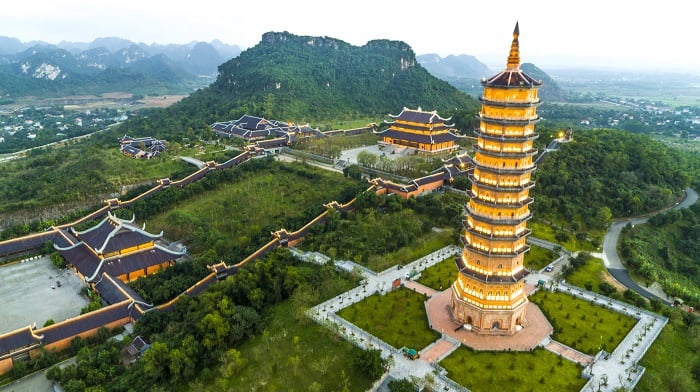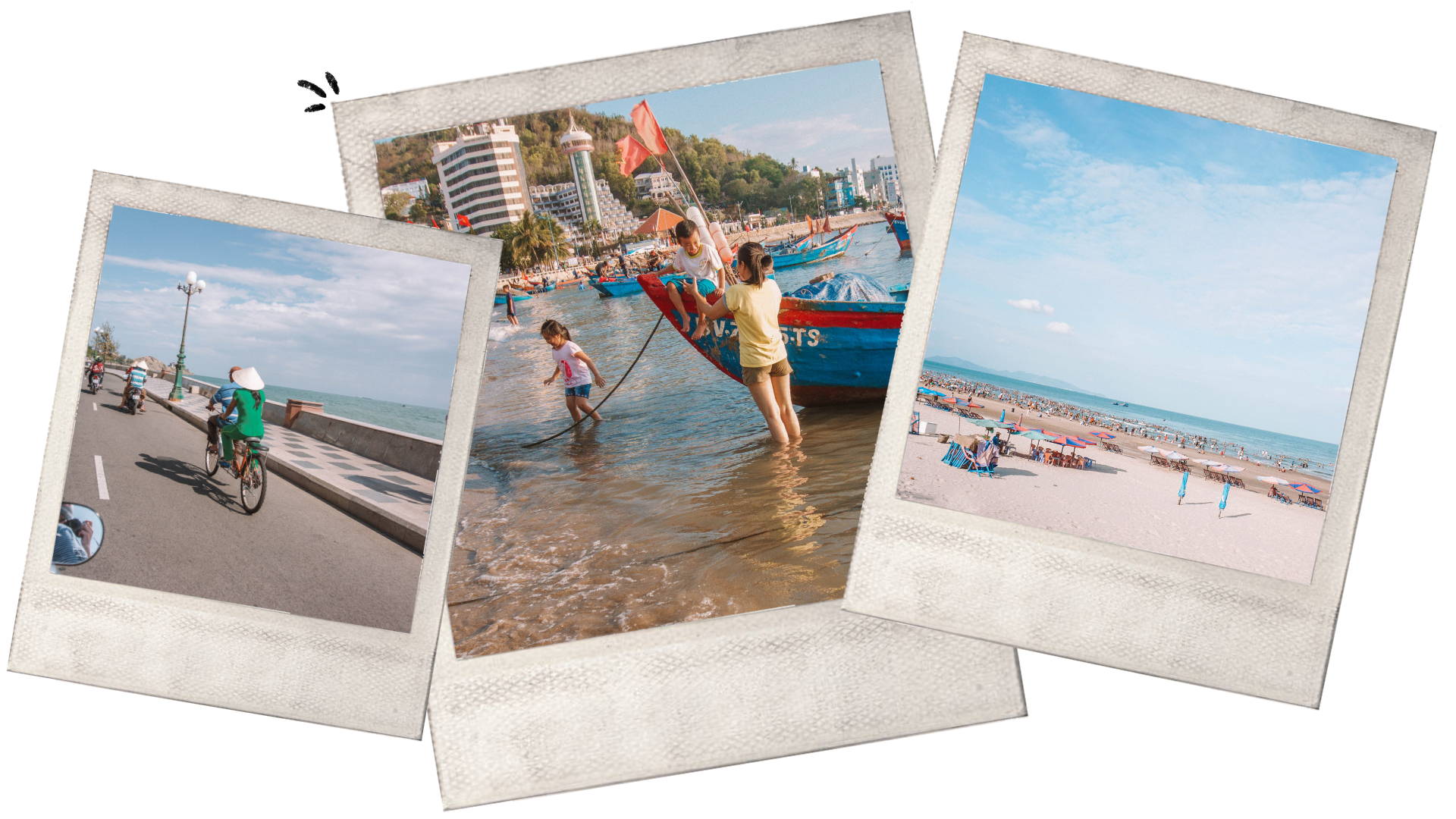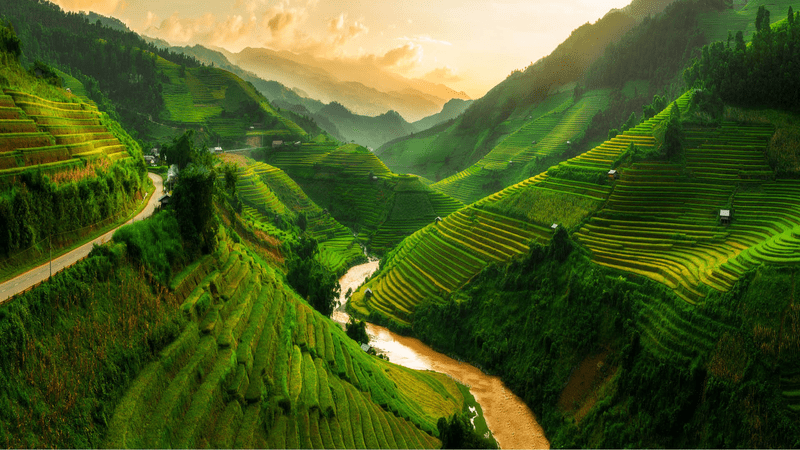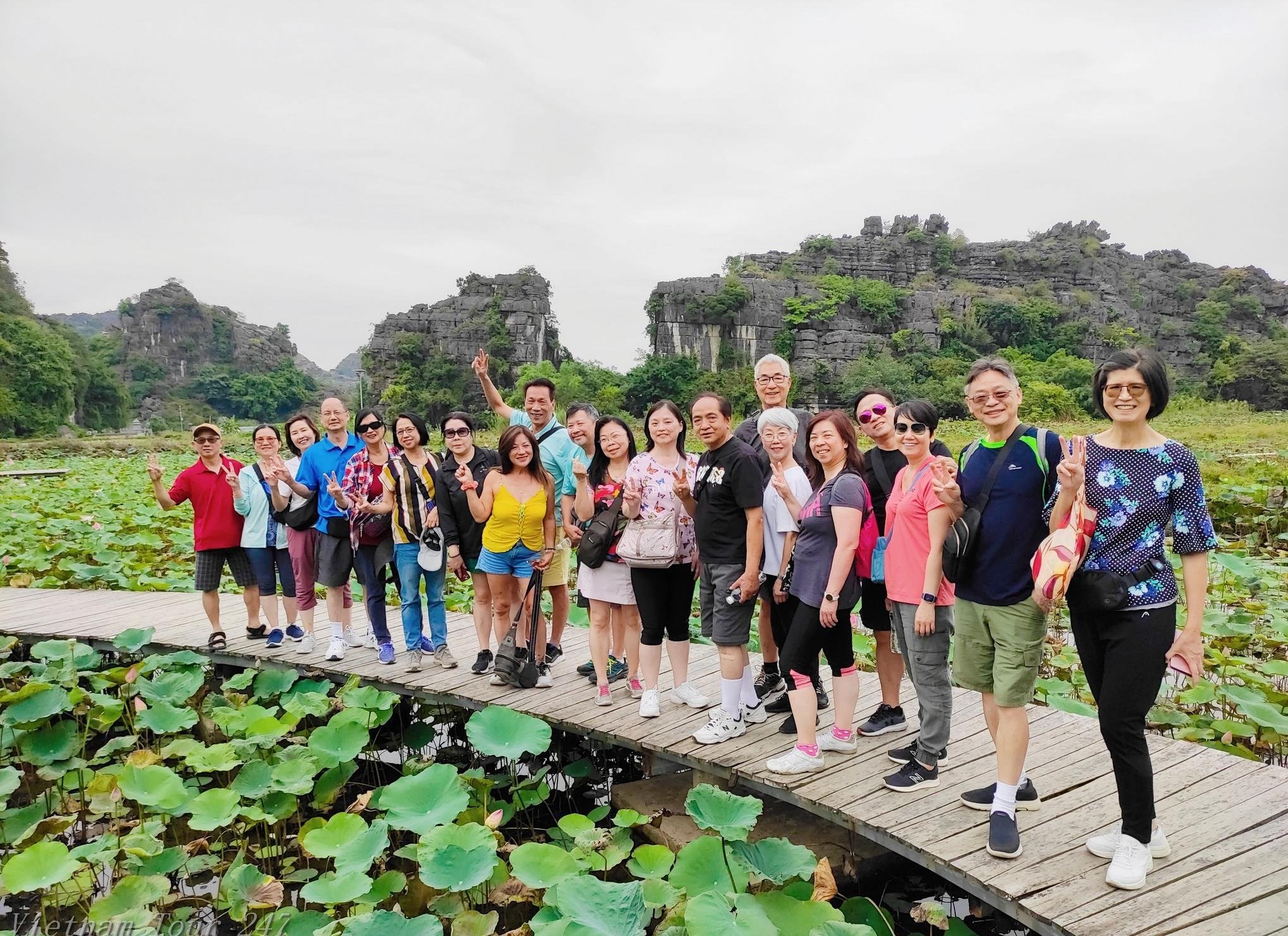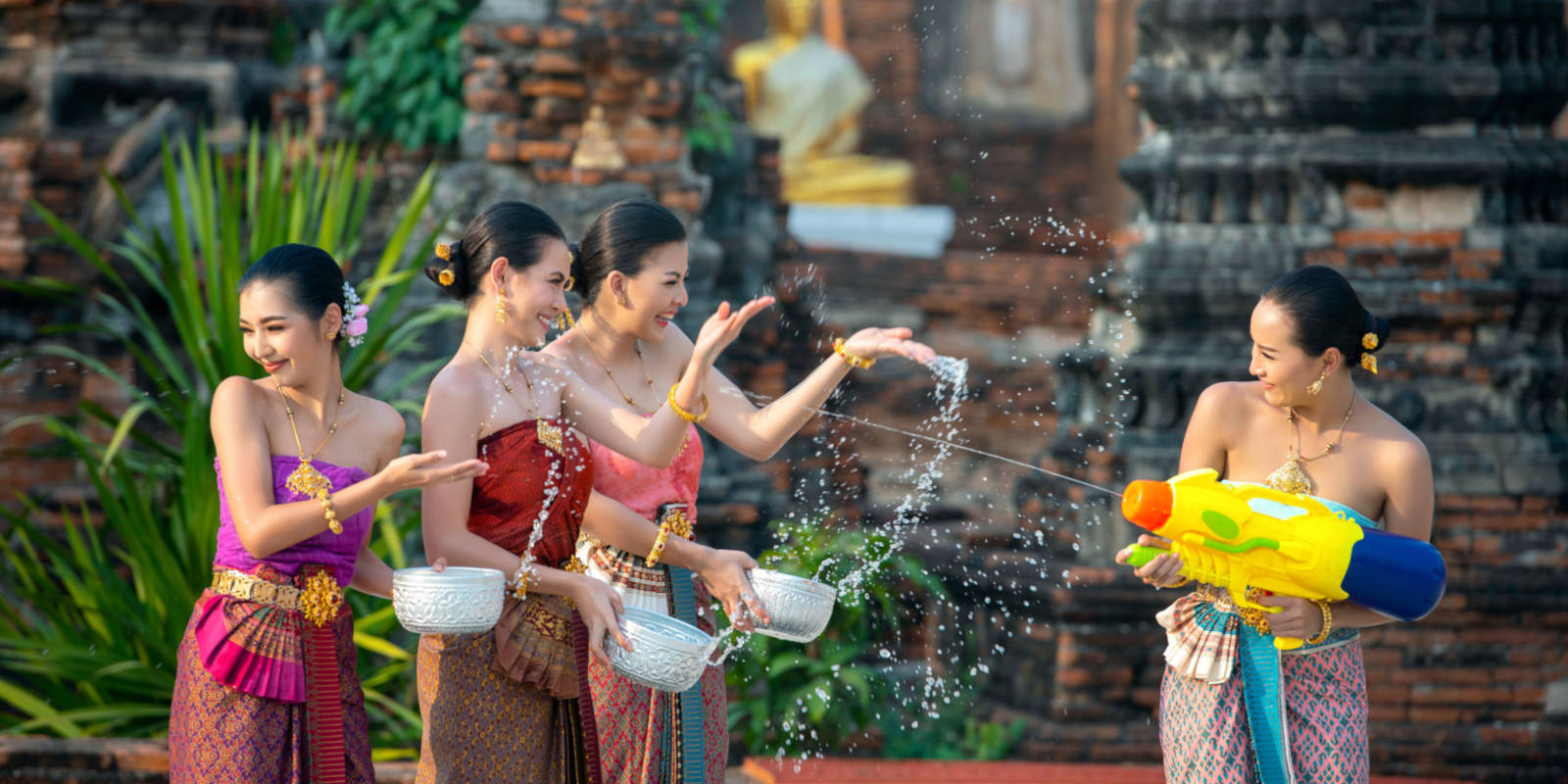Known as “the largest pagoda in Vietnam,” Bai Dinh Pagoda is a vast and exquisite Buddhist architectural complex situated amidst the breathtaking natural surroundings of Ninh Binh. This location draws visitors not only for its tremendous cultural and historical significance but also for its majestic and sacred beauty. In the article that follows, let’s tour Bai Dinh Pagoda (Bai Dinh Temple) with Vietnam Tour 247.
Some basic information about Bai Dinh Pagoda
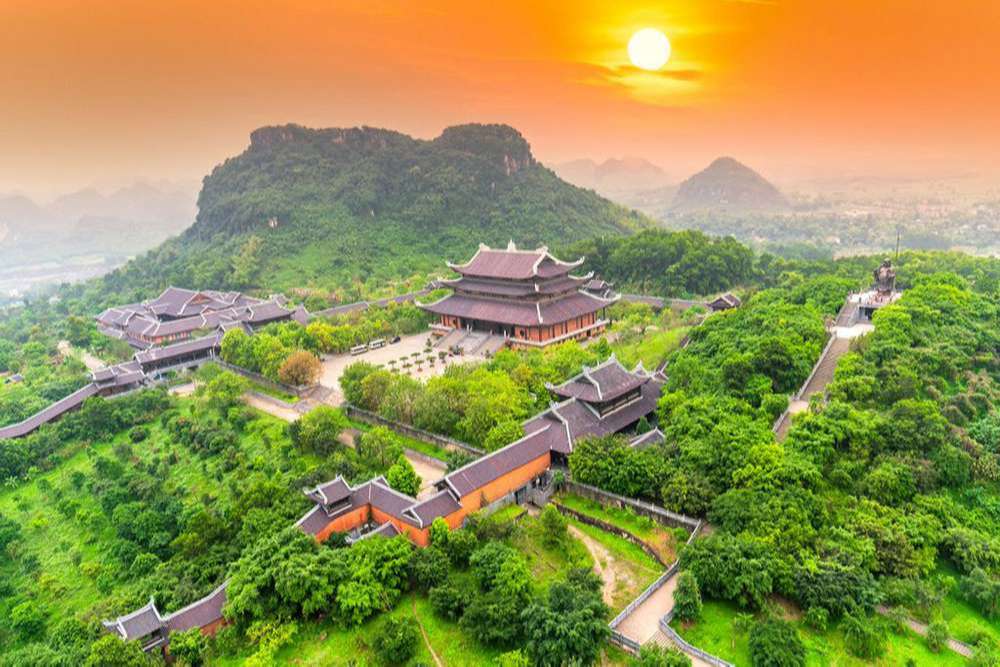
Situated 15km from Ninh Binh city in Gia Sinh commune, Gia Vien district, Ninh Binh province, Bai Dinh pagoda is a sizable complex of pagodas comprising an old pagoda area and a new pagoda area constructed in 2003. This location has long since developed into a spiritual hub that draws a large number of travelers and Buddhists who come to pray for world peace.
The Bai Dinh Pagoda is well-known for its several outstanding records, which confirm its status as the biggest pagoda in Vietnam and the one with the greatest records overall. Among the notable documents about Bai Dinh Pagoda are:
- Asia’s largest gold-plated bronze Buddha statue
- The largest bronze statue of the Three Buddhasin Vietnam
- The largest bronze Bodhisattva statue in Vietnam
- The largest outdoor Maitreya statue in Southeast Asia
- The largest Great Bell in Vietnam
- The largest temple complex in Southeast Asia
- The corridor has the longest Arhat Statue in Asia
- The largest number of Bodhi trees in Vietnam
History of Bai Dinh Pagoda
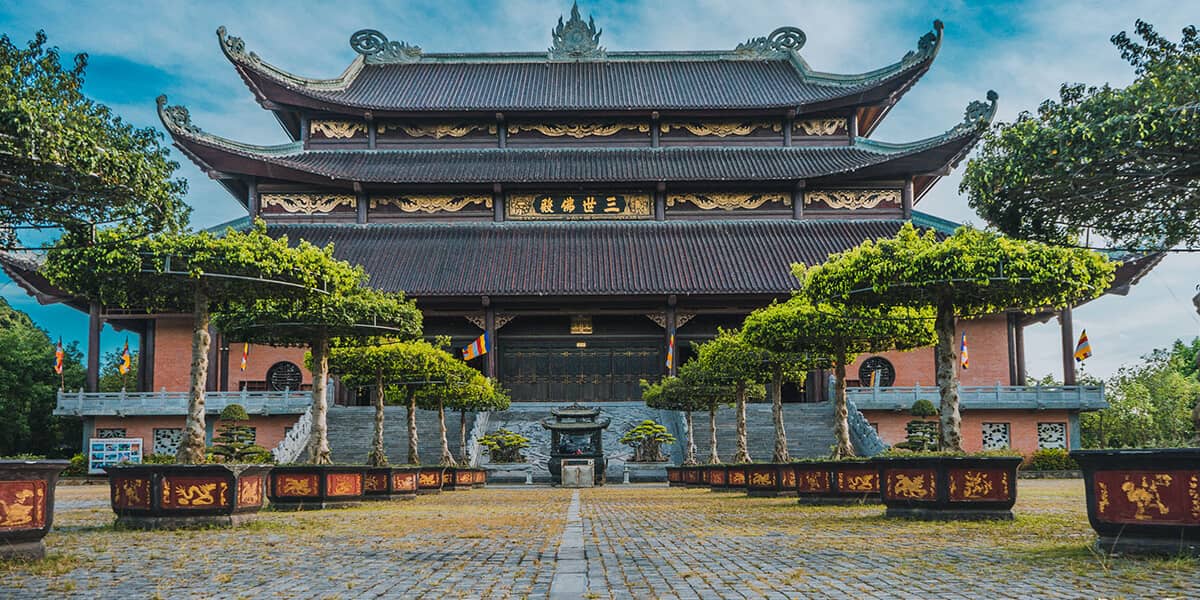
Ancient Bai Dinh Pagoda has a history of more than 1,000 years, associated with 3 feudal dynasties: Dinh, Early Le and Ly dynasties. During the reigns of these three dynasties, in the capital Hoa Lu (Ninh Binh), Buddhism was considered the state religion and developed strongly.
As a result, numerous pagodas, including the historic Bai Dinh pagoda, were constructed nearby. The architecture and antiques at Bai Dinh Pagoda have strong Ly Dynasty influences, despite having a history that dates back to the Dinh Dynasty. This is what makes them interesting.
The name “Bai Dinh” refers to the mountain where the nation’s valiant historical events occurred, Dinh Mountain. This location was formerly marked by King Dinh Tien Hoang, who erected an altar here to pray for favorable weather and wind. A flag-offering ceremony was then held by King Quang Trung to inspire his warriors before heading to Thang Long to fight the Qing army.
In addition, the Bai Dinh Pagoda is a revolutionary artifact from the Quynh Luu war zone’s resistance era. For the people, this location symbolizes the revolutionary propaganda efforts of the Communist Party of Vietnam’s leaders.
Through many historical ups and downs, Bai Dinh Pagoda (Bai Dinh Temple) is not only a spiritual destination that attracts tourists but also a testament to the longevity of cultural and historical values in the ancient capital of Hoa Lu.
Architecture of Bai Dinh pagoda complex
The two primary parts of the Bai Dinh Pagoda complex are the newly built Bai Dinh Pagoda and the ancient pagoda, each having distinctive architectural elements.
The newly built Bai Dinh Pagoda
Built atop Ba Rau hill, close to the Hoang Long river, between 2003 and 2010, Bai Dinh pagoda is a prominent structure spanning an area of 80 hectares. This pagoda complex is distinguished by its enormous architectural works that beautifully blend modern and Vietnamese traditions.
Tam The Hall, the largest architectural structure in this area measuring 34 meters in height and more than 59 meters in length, is the center of attention. A 100-ton, 10-meter-tall bronze statue of Shakyamuni Buddha made of gold-plated bronze is housed here, along with statues of Maitreya and Avalokiteshvara, two Bodhisattvas.
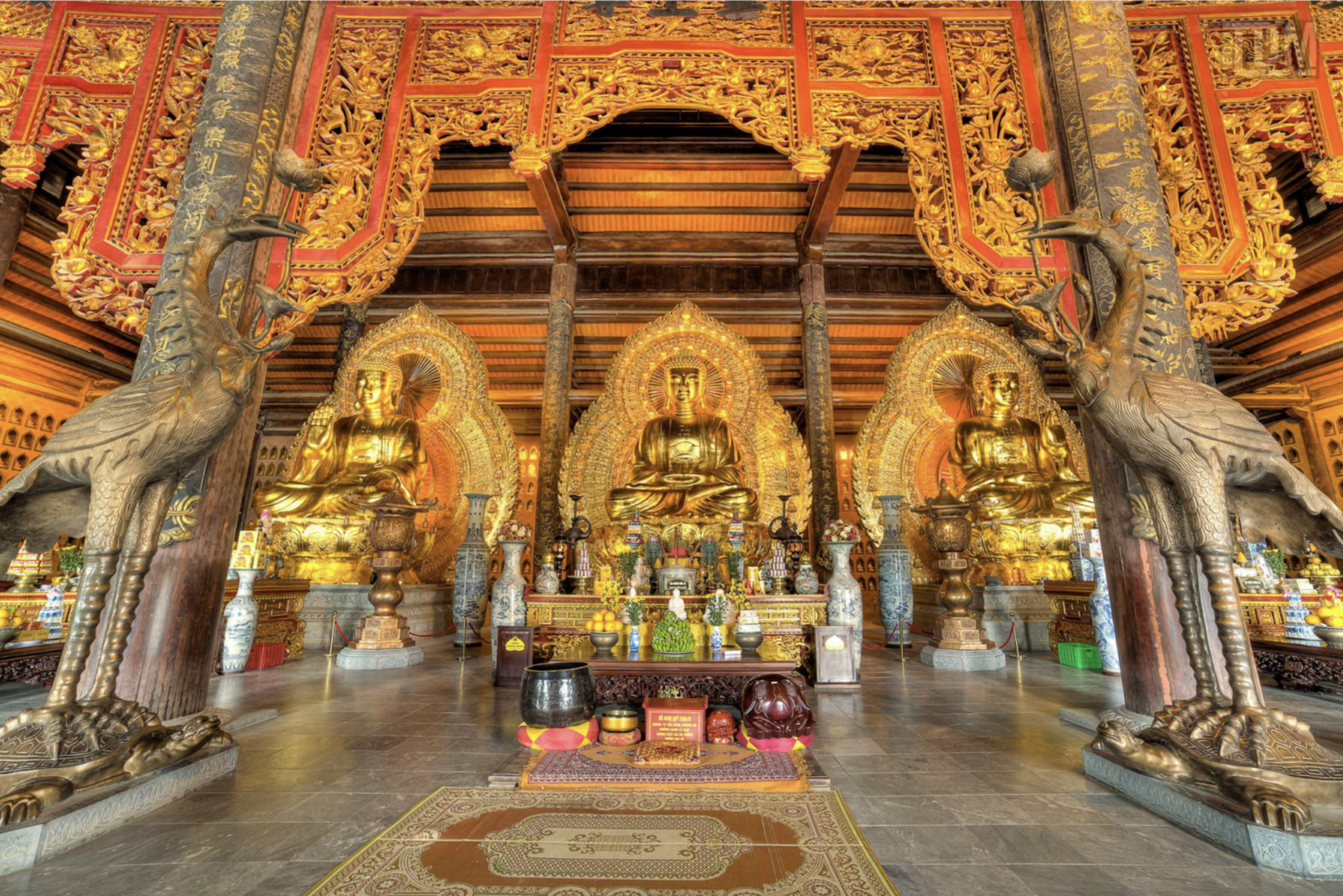
The newly built Bai Dinh Pagoda architecture is also shown through sophisticated details such as:
- The phoenix tail serves as the emblem for the curved temple roof, which exudes grandeur and grace.
- Construction materials mainly use Ninh Binh green stone, precious wood and dark brown Bat Trang glazed tiles, bearing a strong traditional mark.
- Exquisite sculpture with Y Yen bronze works, Ninh Van stone carvings, Phu Loc wooden furniture and Ninh Hai rentals.
The ancient Bai Dinh Pagoda
The ancient Bai Dinh pagoda is situated at the base of the hill, concealed in little caverns on the slope, some 800 meters from the more recent Bai Dinh temple. This location radiates serene, holy beauty as its modest, rustic building bears the marks of time.
Coming to the ancient Bai Dinh Pagoda, visitors can discover:
- There is a 300-step stone walking path that leads to the ornate temple gate.
- Statues of Buddha and gods are worshiped in caves.
- Gieng Ngoc (The pearl well), moon-shaped with a diameter of 30 meters and a depth of 10 meters is considered sacred and good luck.
Other prominent landmarks
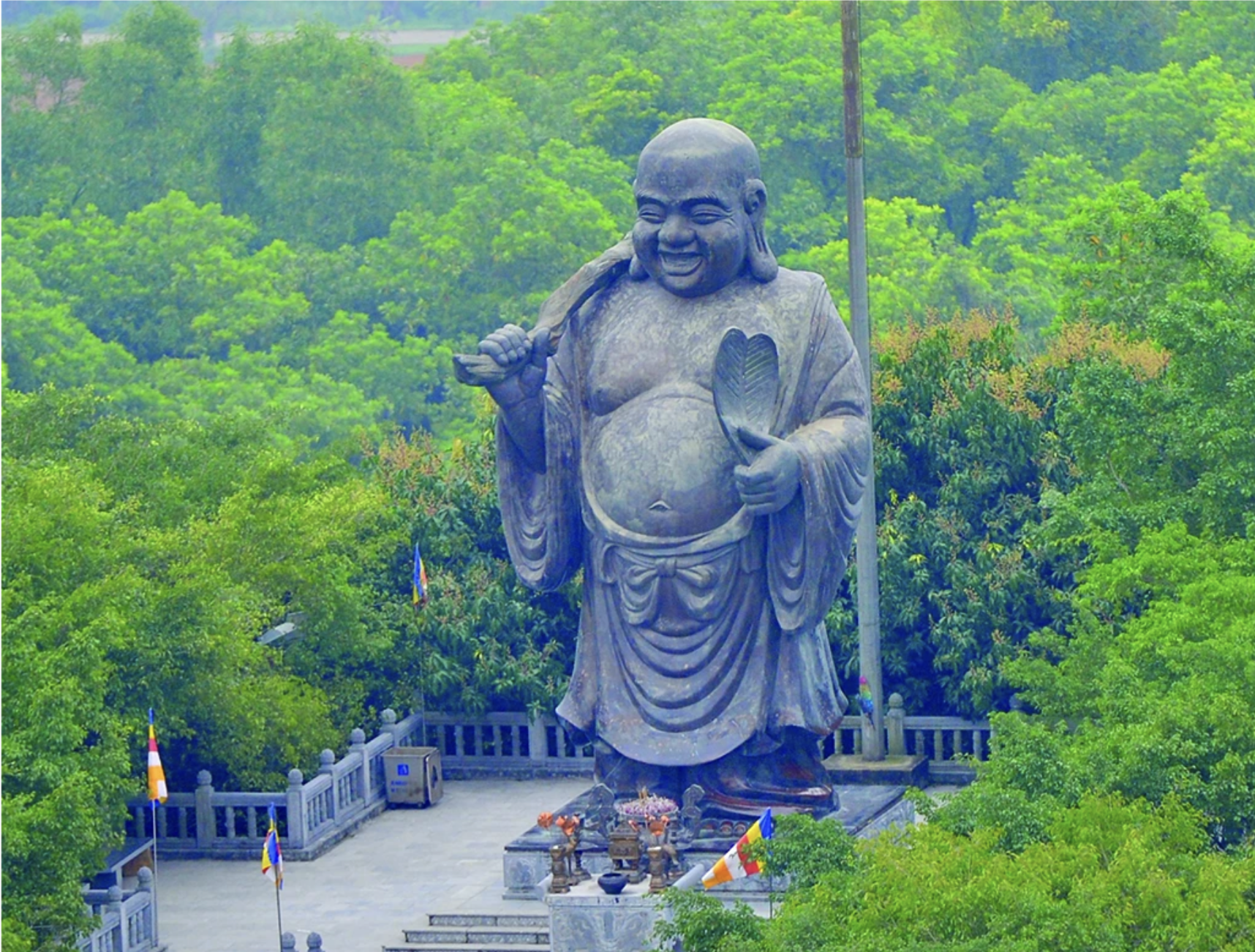
Apart from its two primary sections, the Bai Dinh Pagoda complex is home to other well-known tourist destinations, including:
- Bell Tower: Standing 18.25 meters tall, the octagonal tower houses a 36-ton bronze bell.
- Arhat Corridor: The longest corridor in Asia with 500 Arhat statues placed on both sides.
- Avalokiteśvara Bodhisattva Palace: A seven-compartment ironwood structure with an 80-ton bronze statue of Bodhisattva Avalokiteshvara.
- Bao Thap: 99 meter high structure with 72 steps, is the place to store sacred Buddha relics.
- Maitreya Statue: 10 meter high bronze statue located on the highest hill, is the largest outdoor Maitreya statue in Southeast Asia.
Best time to visit Bai Dinh Pagoda?
The best time to visit Bai Dinh Pagoda is thought to be in the spring, specifically during the first to third lunar month. The weather in Northern Vietnam is incredibly lovely and warm at this time of year, making it ideal for sightseeing, religious activities, and cultural encounters.
However, this is also the peak tourist season, leading to crowds of tourists. Therefore, if you like peace space, consider other times of the year.
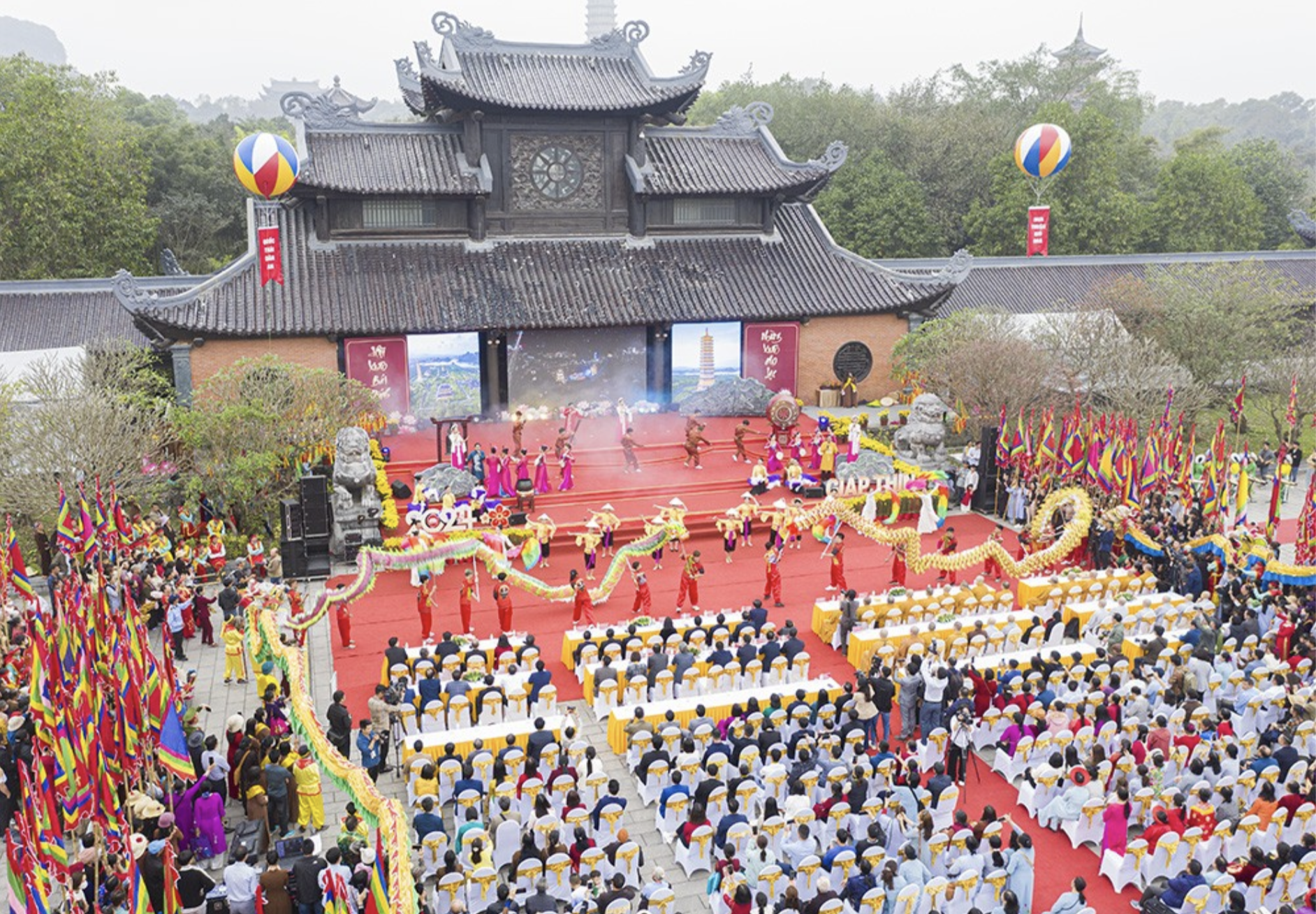
The biggest celebration in Ninh Binh, the Bai Dinh Pagoda festival, is held here during this time as well. It begins in the afternoon on the first day of the Lunar New Year, opens on the sixth day, and runs through the end of the third lunar month. There are two sections to the festival:
- Ceremony: incense burning for Buddha worship, royal merit remembrance, palanquin carrying, and prayers for national and individual peace.
- Festival: includes folk games, visiting caves, enjoying traditional performances, Cheo, Xam singing,…
The beautiful Bai Dinh Pagoda draws a lot of people each year with its numerous alluring activities and grand dimensions.
Notes when visiting Bai Dinh Pagoda
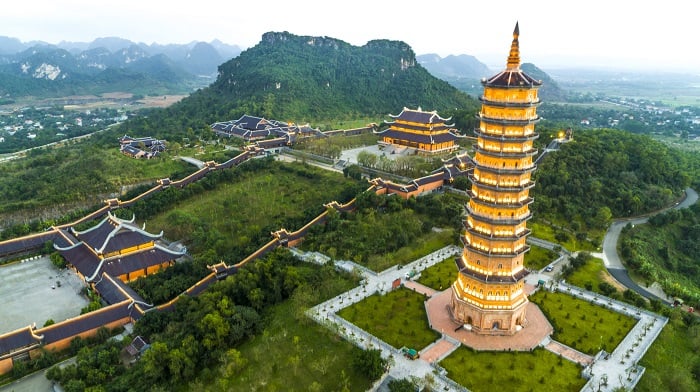
In order to fully enjoy their visit to Bai Dinh Pagoda, tourists need to be aware of the following:
- Wearing clothing that is excessively tight or too short is not appropriate for the spiritual atmosphere of the temple. Instead, dress appropriately for the occasion.
- You will need to walk a lot because the Bai Dinh Pagoda complex is quite huge. Bring sandals or soft, low-soled shoes instead, as this will protect your feet and allow for easier movement.
- Bring sunscreen, a hat, and sunglasses if you’re traveling during the summer to protect yourself from the heat.
- The weather in Ninh Binh might change suddenly, so you should pack an umbrella or a raincoat in case.
Read more: Melody Of Mountain And Sea – 9 Days
Destinations near Bai Dinh Pagoda that you should not miss
Additionally to being a well-known spiritual site, Bai Dinh Pagoda is a great place to start exploring Ninh Binh’s many other fascinating locations. You can visit Bai Dinh Pagoda in addition to a few more well-known neighboring sights like:
- Trang An National Park: Famous for its stunning cave system, verdant valleys, and historic pagodas, this location has been inducted into the UNESCO World Heritage List. A boat ride across picturesque canals allows visitors to discover historical places and take in the beauty of the natural world.
- Tam Coc – Bich Dong tourist area: Dubbed “Ha Long Bay on land” with lush green rice fields, majestic limestone mountains and mysterious cave systems. Visitors can visit by boat or bicycle, enjoying the fresh air and peaceful scenery of Tam Coc.
- Thung Nham Bird Park: This is a wildlife reserve that is home to numerous uncommon bird species due to its diversified habitat. Wander along the paths, observe birds in flight, and discover more about their natural environment.
- Hoa Lu ancient capital: The historical capital of Vietnam was Hoa Lu, which served as the seat of the Dinh and Le dynasties. Learn about the culture and history of the former capital by seeing historical treasures including the tombs of kings and the temples of King Dinh Tien Hoang and King Le Dai Hanh.
- Cuc Phuong National Park: This is the largest primeval forest in Vietnam with a rich and diverse ecosystem. Visitors can participate in trekking activities, explore wild nature and learn about rare flora and fauna species.
Read more: Charming Northern Vietnam – 06 Days
Together with being a popular spiritual site for tourists, Bai Dinh Pagoda is also a source of pride for the people of Ninh Binh. Visit Bai Dinh Pagoda once to experience its majesty, grandeur, and significant cultural worth. You will undoubtedly make many wonderful memories and have amazing encounters on your spiritual discovery path.

For guidance on a comprehensive and complimentary itinerary, please get in touch with Vietnam Tour 247 right away if you wish to see the Bai Dinh Pagoda or any other notable sites in Ninh Binh but are unsure of where to begin. You will undoubtedly have amazing adventures!

